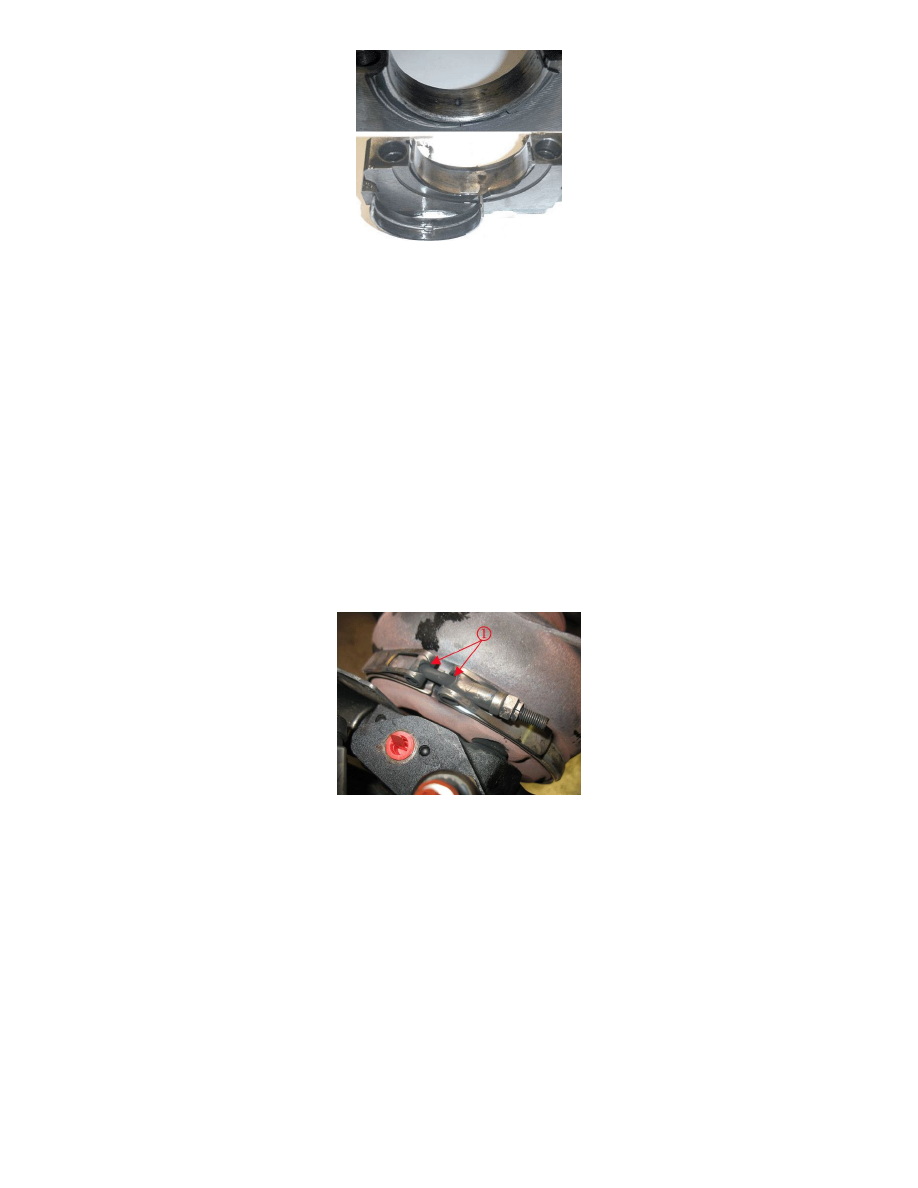Savana 4500 V8-6.6L DSL Turbo (2009)

Bearing failure. Spun main bearings.
Engine Premature Wear and Breakdown Due to Improper Function of Fuel Injector
A fuel injector may fracture a piston or melt a piston but the damage will be limited to that cylinder only and all other pistons and cylinder walls are OK.
In some cases hydraulic lock will occur on the suspected cylinder with an over-fueling fuel injector. Hydraulic lock on the suspected cylinder will cause
a bent connecting rod. This can be verified with piston protrusion measurements.
2007-2010 RPO LMM Only Turbocharger DTC P003A Set
General Motors has identified a turbocharger (TC) failure mode involving Power-Up Kits that causes soot leakage and DTC P003A to be set. The
Power-Up Kits create an overtemperature condition from the increased exhaust gas temperatures that results in a permanent and excessive turbine
housing distortion at the TC case halves.
1. A technician may observe one or more of the following conditions:
-
DTC P003A being set as Current or in History.
-
An unusual odor emanating from the TC due to an overtemperature condition.
-
Soot leaking and accumulating at the V-band clamp that secures the TC case halves together.
-
Limited or unresponsive travel when Commanding the TC Vane Pos. Ctrl. Solenoid ON and OFF with a scan tool.
2. If DTC P003A is found as Current or in History, OR there is evidence of soot leakage (1) in the area of the V-band clamp (1), then technicians
MUST verify if the engine control module (ECM) has a Power-Up Kit aftermarket calibration installed or an aftermarket hardware device has
been installed.
Refer to Service Bulletin Number 08-06-04-006F or newer for the calibration verification information and procedures.
How to Handle a Suspect Engine Failure Due to a Power-Up Device
Dealers should not automatically decline warranty assistance on engine failures due to the fact that a power-up device or modification is evident or
suspected. The technician must identify that the failure is due to a power-up device by teardown analysis and diagnosis of the engine components. The
following steps should be taken if an engine failure occurs and it is suspected that the modification or addition of a power-up device maybe the cause of
the engine failure. If unclear of this process or direction feel free to contact your Fixed Operations Manager (in Canada, Warranty Manager) for further
support.
1. The technician should use proper engine diagnostics to lead him/her to the failed engine components. The Aftermarket Power-Up Kit Check List
should be followed and if it is determined that at least three of the Aftermarket Power-Up Kit Check List items match the engine component
failures then it can be decided that the failure is not a warrantable claim.
2. Engine failures that meet at least three criteria of the Aftermarket Power-Up Kit Check List are considered failures that are not manufacturer's
defects in workmanship or materials.
3. The dealership should contact the PQC, open a case to review the findings and make the final decision on warranty coverage. The Fixed
Operations Manager (in Canada, Warranty Manager) should be notified of the PQC decision.
